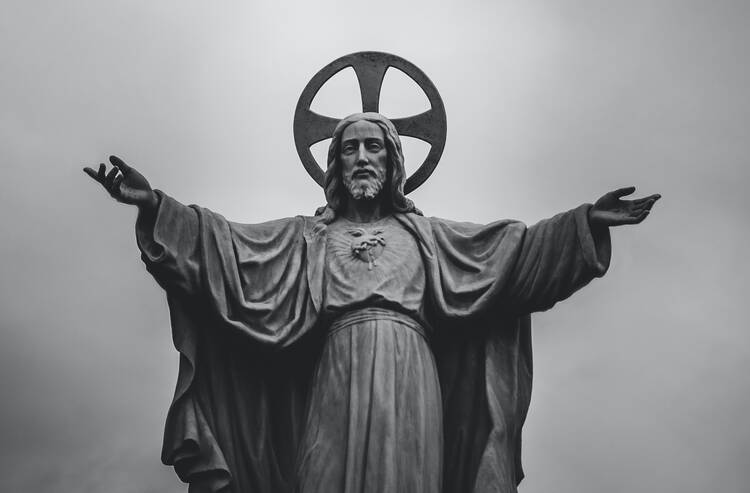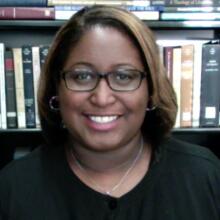Jesus is risen, exclusion is dead.
Happy Easter! Today we celebrate Jesus’ resurrection from the dead. The first reading and the Gospel offer insights into early Christian witnesses that can inform us as witnesses for Christ today.
For they did not yet understand the Scripture that he had to rise from the dead. (Jn 20:9)
How has the Lenten season prepared you to encounter Christ in the resurrection?
What can you do to be a witness to Christ?
What do you do to strengthen your faith and share it with others?
In the first reading, from the Acts of the Apostles, Peter speaks to a group of Jews and Gentiles about God’s impartiality and openness to all people. Highlighting Jesus’ preaching and healing ministry, Peter affirms that Jesus’ followers were witnesses to Christ. Peter also emphasizes prophetic witness, saying, “To him all the prophets bear witness, that everyone who believes in him will receive forgiveness of sins through his name.” This affirmation connects Jesus with the Jewish prophetic traditions while also inviting Gentiles to be believers, drawing both groups into the new Christian movement. Soon after this speech, the Gentiles receive the Holy Spirit, demonstrating the power of Christian witness for inspiring belief.
Today’s Gospel, from John, focuses on the first three Christian witnesses—Mary of Magdala, the beloved disciple and Simon Peter—and their encounter at the empty tomb. Their actions could be read as creating a hierarchy of roles and responsibilities within the tradition, although this should be avoided. For instance, Mary (and perhaps other women with her) does not enter the tomb but informs the male disciples of the discovery. The beloved disciple allows Peter to enter first, even though he arrives before him, possibly as a sign of deference to Peter’s authority. This type of reading creates unnecessary competition and power dynamics between the first witnesses, perhaps to subordinate women (Mary) and elevate clergy (Peter) above the laity (beloved disciple). Instead, their actions reveal different reactions to the mystery of the resurrection; each reaction is important.
Mary discovers the empty tomb probably because she and other women were going to anoint Jesus’ body, according to the Synoptic tradition. Mary’s presence at the tomb reveals her commitment to Christ, even in death. When she sees the stone removed from the tomb, she is concerned about potential foul play, understanding that the people who orchestrated Christ’s death might do additional harm by desecrating his body. Alarmed, she informs two other disciples that the tomb is empty, becoming the first to proclaim the resurrection, even before she fully recognizes it, which comes later in the narrative.
The second witness is the beloved disciple, not one of the Twelve Apostles but an unnamed follower sometimes thought of as the evangelist John. Hearing Mary’s word, the beloved disciple runs to the tomb, becoming the first to respond to the proclamation of the resurrection. Rather than enter the tomb, the beloved disciple bends down to look, changing his posture to see within the tomb and perhaps metaphorically changing his posture in recognition of the sanctity of what has occurred in the tomb. When the beloved disciple enters after Peter, “he saw and believed,” becoming the first to believe in the resurrection.
Peter arrives eager to understand and encounters the empty tomb. He enters and investigates the area, observing the linen wrappings and head covering that were on Jesus’ body. Peter’s actions show his desire to learn, becoming the first to encounter the empty tomb and attempt to understand the resurrection.
These early Christian witnesses struggled with the mystery of the resurrection. Their reactions are a mixture of fear, faith, confusion and understanding. Throughout the Easter season, we will hear more about these reactions and encounters with the risen Christ and the mission to spread belief, as we heard in the first reading. These texts remind us that Christian witness is not just about recognizing the empty tomb; it is a call to action. When Mary encounters the empty tomb, she tells others who come to believe (beloved disciple) and seek to understand (Peter). As we enter this Easter season, we should be mindful of how our lives reflect our witness to the risen Christ. Our actions should reveal faith in Christ and understanding of the Gospel, which can inspire others to believe.
This article also appeared in print, under the headline “Christian Witness,” in the April 2021, issue.









